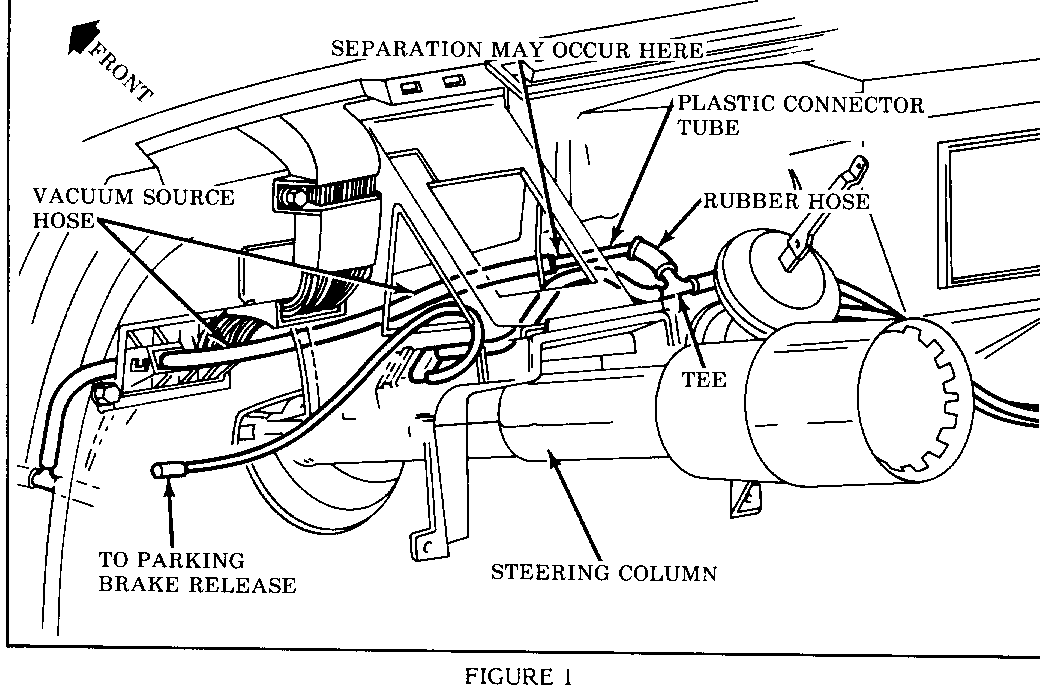A/C FROM VENT-BRAKE LIGHT ON UNDER-DASH VAC HOSE SEPARATED

VEHICLES AFFECTED: 1985 FWD Devilles and Fleetwoods --------------------------------
Some 1985 front-wheel-drive Devilles and Fleetwoods built prior to B.C. #266168 may experience a separation of the under-dash vacuum source hose from the plastic connector tube located above the steering column as shown in Figure 1.
A vacuum tube separation at this location may be indicated by the following symptoms:
. Air conditioning discharge air diverted to the lower vents. . Automatic parking brake release inoperative. . Brake warning light illuminated due to low booster vacuum level.
To correct this condition, the following procedure should be used.
1. Remove the lower sound insulator panel.
2. Remove the shift indicator cable clip from the steering column shift bowl. Remove the four steering column mounting bolts and lower the steering column, allowing the steering wheel to rest on the seat.
3. Locate the disconnected ends of the rubber vacuum source hose and the plastic connector tube.
4. Remove the plastic tube and short section of rubber hose from the vacuum tee.
5. Insert the vacuum tee into the long rubber vacuum source nose as shown in Figure 2. Verify that the vacuum tee penetrates into the hose as far as possible.
6. Inspect the vacuum line connections leading to parking brake release valve and A/C programmer. Be sure connections are tight and hoses are not in tension. Reposition hoses if necessary to eliminate any binding or tension.
7. Install steering column mounting bolts and shift indicator cable clip.
8. Install lower sound insulator panel.
9. Verify proper A/C air distribution, parking brake release operation and adequate brake assist.


General Motors bulletins are intended for use by professional technicians, not a "do-it-yourselfer". They are written to inform those technicians of conditions that may occur on some vehicles, or to provide information that could assist in the proper service of a vehicle. Properly trained technicians have the equipment, tools, safety instructions and know-how to do a job properly and safely. If a condition is described, do not assume that the bulletin applies to your vehicle, or that your vehicle will have that condition. See a General Motors dealer servicing your brand of General Motors vehicle for information on whether your vehicle may benefit from the information.
